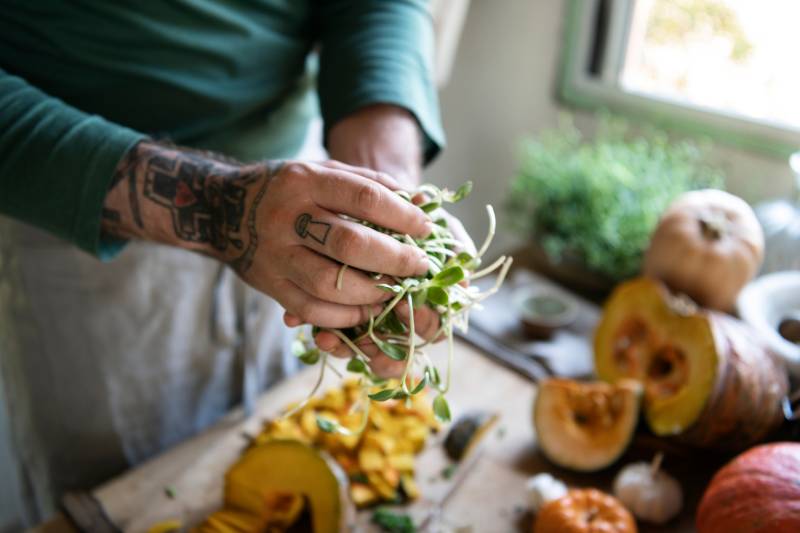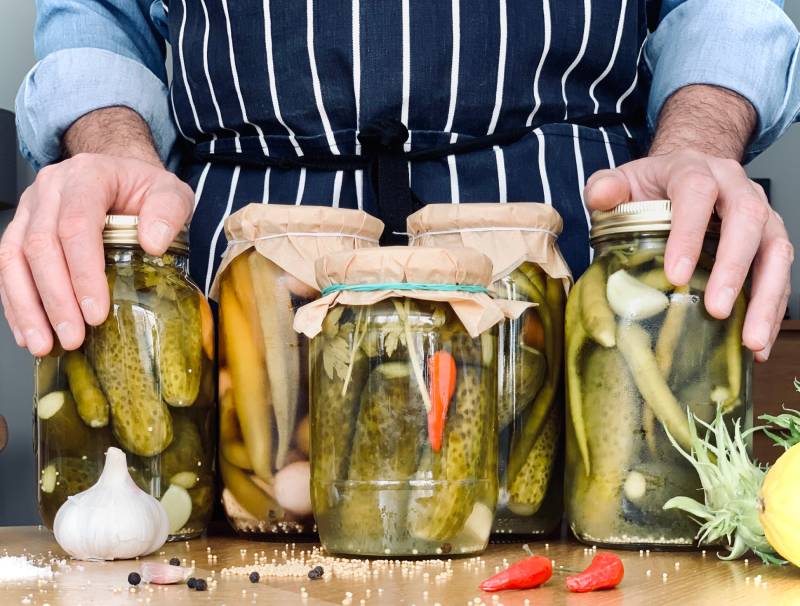
COGS can be a funny old thing.
Especially in recent times, one week they’re relatively low cost, almost reasonable. The next they’re sky high and rising out of sight.
The fluctuating market we’re operating in doesn’t help. With disruptions to the supply chain, fluid border restrictions and good old seasonality, there’s rarely been a tougher time to balance your COGS than right now.
But there are ways you can manage yours and keep some form of consistency, even in times as volatile as these.
Read on to see how you can keep on top of your COGS in these five simple steps:
Manage your profit margins & COGS
It's never been easier thanks to our free eGuide in collaboartion with FoodByUs. Get key industry knowledge on managing your supply chain, sourcing ingredients, and creating profitable recipes
Bulk ordering
There are fewer things nicer to a chef than a well stocked pantry. There’s just something about having an absolute bounty of different dry goods on hand that makes us feel assured. But a pantry doesn’t stock itself, and filling a pantry for commercial cooking isn’t cheap.
But there is a way to make it cheaper.
If you can identify some of the most frequently used ingredients in your venue year-round (and it doesn’t even have to be in the pantry either), it’s much cheaper in the long run to buy in bulk a minimal amount of times than buy the minimum many times (try saying that 10 times fast) if your storage situation allows it.
Things like flour, sugar, salt, pepper, and other spices have a huge shelf life, so they’re ideal to buy in big quantities and put in larger containers for use throughout the year.
As for fresher products, consider using them across multiple dishes on your menu so that you can enjoy the discounts of bulk ordering on those ingredients too.
Which leads quite cleanly into my next tip:
Move with the seasons
Fresh produce is cheaper, more abundant, and of a much higher quality when it’s in season.
Think about it.
Have you ever gone into the greengrocers for something that’s been cheaper for a few months, only to find that the price has jumped up several dollars (and taken a nosedive in quality) seemingly overnight? You’ve just fallen victim to the perils of the seasons.
The tomatoes you paid pennies for last week were bigger, more vibrant and all-around healthier looking than their overpriced replacements.
This is why changing your menu to align with what’s on offer that season lowers your COGS and saves you money.

It’s one of the most beautiful things about seasonal produce: it’s at its cheapest when it’s at its best, meaning that your COGS go down as the quality of your food goes down.
It also has the benefit of keeping your menu from stagnating with the same items for too long. New dishes give your customers more reasons to visit, meaning more money in the till, and the more money in the till, the lower your COGS.
Lower your food wastage
Now, with most fresh produce comes wastage. It’s very rare that an entire fruit, vegetable, or animal can be used in its entirety for a dish. There’s always going to be some leftover skins, husks, seeds, or bones.
But what was once fodder for your trash can can be used for something better.
The skins of the oranges you’ve just used to make fresh squeezed OJ can be simmered in some water with a few spoons of sugar to make a great syrup for homemade sodas (I used to call it “Bootleg Orangina”). Same too for any lemons or limes you might have used in your dressings.
And if there’s any bones left over, pop them in a pot of boiling water with all of the wastage from your prep (stuff like ends of onions, tomato seeds/pulp, corn husks), along with some salt & pepper, maybe some herbs (even their stalks), let it simmer for a few hours, sieve it all out and you’ve got a banging stock.
Indeed, there’s not much a good pot of boiling water can’t extract goodness from. Something to consider next time you’re about to drop your wastage into the bin.
You can also harness your POS to make sure you’re managing your inventory to its full potential. By knowing what stock you have on hand, you’ll know what you need to order, and how much, resulting in less food wastage.
GM of Lune Co, Ryan Butler says,
…utilising Produce and Purchase to, essentially, recipe create to order, get stock in, and…access the things that they’ve ordered in Lightspeed, (you) get a really good account of how much stock is being used, and how much it’s costing us to make those recipes, which then helps decrement the stock as we sell those products in store.
Use a food cost calculator
If you’re like me, then you want to know how much your menu items are going to cost you down to the cent. That’s where a good food cost calculator comes in very handy. And it just so happens that we’ve got one for you to use right here, for the low, low price of absolutely nothing.
Food cost calculators can show you exactly where your money is going by laying out the cost for each component of a dish, and then using the sale price for that menu item to calculate your COGS. The benefit of this is that you can really see which ingredients are raising your COGS, meaning that you can then consider a cheaper alternative.
For example, Parmigiano Reggiano (or parmesan to us commoners) can cost an average of $40-50 per kilo. Pecorino Romano on the other hand costs about half that, and tastes very similar, making it an ideal substitute.
Another benefit of using a food cost calculator is seeing which of your dishes have the highest profit margins. By gaining access to this knowledge, you can then push these higher earning dishes over the dishes that make you less money. Again, more money in the till (especially on dishes with super high profit margins) equals lower COGS.
Make it homemade
Homemade food is almost always better than mass produced (apart from Domino’s Cheesy Crust which is delicious and very difficult to master at home), so it makes sense to have as much of your menu as possible made in house, right?
And sure, there’s a bunch of extra time needed to produce something that you can just order a jar of through your providore, but it’s just not the same, is it?
Making your own ingredients is a great way to not only make your menu uniquely yours, but it’s also a great way to lower your COGS. Let me explain how.

Say you use pickles in a dish. Your providore sells pickles by the tub full, but they cost a lot of money for something that can be made by you for a fraction of that cost, driving down your COGS for any menu item you use them on. Making your own pickles also means you control the flavour, giving your customers another new experience when they dine with you. And once you’ve made a batch, you can put some in jars and sell them. This is where a good (but not unreasonable) markup can give you a healthy profit margin and lower the COGS even more.
Another plus is knowing exactly what goes into your ingredients. It seems like a minor detail, but it can give your customers an added level of trust in what you do if you can say the things you serve them are made from scratch. Such levels of trust are usually reflected in their loyalty to your venue, and as such can be seen in your takings.
Want to learn more about lowering your COGS?
Well, luckily for you Lightspeed and FoodByUs has written a very helpful (and assuredly comprehensive) eGuide on just that, and it’s available for free right here.
Inside you’ll learn everything you need to know about lowering your COGS and boosting your profit margins through implementing some key back of house processes. Everything is backed up by the latest data along with key industry insights to help you on your way to mastering your COGS & profit margins.

News you care about. Tips you can use.
Everything your business needs to grow, delivered straight to your inbox.


